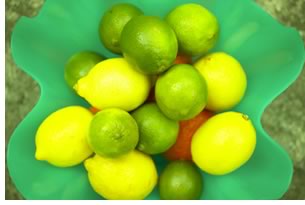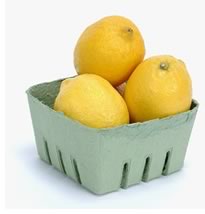

12/2005
by James B. Atkins, FAIA, and Grant A. Simpson, FAIA
 Risk management, as applied to project management, is a subject worthy
of endless observations and discussions. During this past year, we have
reviewed a number of significant issues, and we sincerely hope that they
have been useful in your architectural practice.
Risk management, as applied to project management, is a subject worthy
of endless observations and discussions. During this past year, we have
reviewed a number of significant issues, and we sincerely hope that they
have been useful in your architectural practice.
In this final article of 2005, we examine the importance of learning from our mistakes and improving our practice so that we can apply effective solutions to future work. Article 2 of this series, Risk Management Basics, contained a quote from George Santayana, “Those who cannot learn from history are doomed to repeat it.” Learning from our mistakes is essential for professional growth. However, learning does not always come naturally or with ease.
When Frank Lloyd Wright was asked which of his buildings was the most beautiful, he reportedly replied, “The one on my board right now.” Obviously, Mr. Wright felt that each of his designs was better than the one before with the apparent assumption that his skills and knowledge improved with each project. Likewise, our objective should be to take our experiences—however rewarding and delightful, or painful and challenging—and use them to improve our basic skills with each project experience.
 We will also touch on the comments made by practitioners who responded
to our articles. We consider all comments valuable, and we urge you to
share your thoughts with us as we continue with the series through 2006.
Next year, as the AIA moves toward our 2007 sesquicentennial anniversary
year, we will try to broach the cogent issues that most affect how we
practice architecture.
We will also touch on the comments made by practitioners who responded
to our articles. We consider all comments valuable, and we urge you to
share your thoughts with us as we continue with the series through 2006.
Next year, as the AIA moves toward our 2007 sesquicentennial anniversary
year, we will try to broach the cogent issues that most affect how we
practice architecture.
“Experience is simply the name
we give our mistakes”
This well known quotation by Oscar Wilde captures the essence of how
we learn. We spend a significant amount of our time attempting to avoid
mistakes with seminars, research, professional articles, and discussions
with our colleagues. We ardently strive to maintain our corporate knowledge,
our detail libraries, and our professional references so that we can
try to avoid getting it wrong the first time.
Although it may sound like an oxymoron, mistakes are in fact an integral part of the standard of care. Every practitioner makes mistakes, and AIA documents such as G701 Change Order, G716 Request for Information, and G710 Architect’s Supplemental Instructions, are examples of tools that anticipate these naturally occurring events. Reality dictates that mistakes will always occur no matter how hard you try to avoid them. An ambitious goal to pursue is the elimination of repetitive errors. If we could do only that, within a short time we would be experiencing only original, never before experienced mistakes. Realistically, this may never be achievable; nonetheless it is a prudent career objective.
 There are many approaches when designing and detailing any built condition;
some ways are better than others, some ways are just plain wrong, and
no way is absolutely perfect. Nonetheless, experiencing the wrong approach
can provide benefits, but only if we learn the correct way during the
process. If we can gain from each misstep, over time we can realize a
progressive improvement in our talents and in our products of service.
There are many approaches when designing and detailing any built condition;
some ways are better than others, some ways are just plain wrong, and
no way is absolutely perfect. Nonetheless, experiencing the wrong approach
can provide benefits, but only if we learn the correct way during the
process. If we can gain from each misstep, over time we can realize a
progressive improvement in our talents and in our products of service.
Every project in architecture is in some way a new adventure because no two projects are exactly the same. Most clients do not wish to commission a building exactly like the one across the street. Accordingly, our quest for originality includes continuously attempting new actions and endeavors, and, as Albert Einstein said, “A person who never made a mistake, never tried anything new.”
An attitude of gratitude
The lemonade development process may require an attitude adjustment.
No one wants to take time to wallow in their failures, and our tendency
is to ignore them or to correct them and move on as quickly as possible.
But in our haste to resolve, we miss opportunities to study and learn.
Although we should seek to avoid mistakes, we should be grateful that
with them comes the positive experience of knowing what not to do in
the future. Knowledge is power.
 We
should embrace these opportunities and take measures to retain the valuable
information that accompanies them. For the small office this could be
a journal entry or memos to the project file, and for the large firm
it could involve a more complex process of feedback to other service
groups, and possibly could include company-wide policy changes in the
delivery process.
We
should embrace these opportunities and take measures to retain the valuable
information that accompanies them. For the small office this could be
a journal entry or memos to the project file, and for the large firm
it could involve a more complex process of feedback to other service
groups, and possibly could include company-wide policy changes in the
delivery process.
Mistakes are an integral part of professional practice, and we will be making them as long as we practice architecture. But if we discipline ourselves to be students of our mistakes and practice accordingly, we can improve the services that we provide.
Don’t forget the past
The Chinese proverb, “Fool me once, shame on you, fool me twice,
shame on me,” asserts the premise that we only make mistakes a
second time because we allow ourselves to, and our unpleasant experience
adequately enables us to avoid a repetition. Nonetheless, repetitive
mistakes continue to haunt us even with best efforts.
 The process of gaining experience involves learning what we should or
should not do in our work, and the practice of architecture involves
the prudent use of millions and millions of pieces of information. It
is a daunting task to remember all of our bad experiences and apply the
corrective lesson in the future.
The process of gaining experience involves learning what we should or
should not do in our work, and the practice of architecture involves
the prudent use of millions and millions of pieces of information. It
is a daunting task to remember all of our bad experiences and apply the
corrective lesson in the future.
Since there are so many “lessons learned” to retain, it is advisable to keep some type of record. In Chapter 12, Construction Phase–Office, and Chapter 13, Construction Phase–Site, in The Emerging Professional’s Companion, the suggestion is given to compile and maintain a personal notebook for construction contract administration activities. Construction Contract Administrators are encouraged to keep copies of letters and completed AIA documents as examples of effective services and actions. As you gain practice experience, your notebook will grow and become an effective reference for your construction phase work.
In addition to keeping project records or making sketches of interesting details, a journal is an excellent tool for making contemporaneous notes about mistakes as you become aware of them. For example, on a jobsite you might observe how an interior acoustical ceiling detail exhibits flaws where the ceiling intersects a curved wall. The best time to brainstorm a better way to detail it next time is while you are standing there looking at the condition. A photograph and some handwritten notes or sketches can help fix the solution in your mind.
 The most popular form of record keeping for architects is old drawings
and specifications. Our flat files tend to bulge with projects that we
cannot bear to discard because of their handy use as a reference for
current work.
The most popular form of record keeping for architects is old drawings
and specifications. Our flat files tend to bulge with projects that we
cannot bear to discard because of their handy use as a reference for
current work.
Record keeping at the firm level may be accomplished in a somewhat different form. Some firms compile a guidebook that includes not only good practices but also the firm’s specific approach to providing services. At a minimum, architects in a firm who perform the same tasks are encouraged to compare notes from time to time. Exchanging war stories can be quite effective for learning what not to do before it is done.
Building the lemonade stand
If we expect to make gainful use of the lemons in our life, we must devise
ways to process and incorporate them into our personal and professional
activities. We cannot expect corrective professional behavior to occur
naturally. In your personal practice, you can incorporate the process
within your private realm of activities; at your workstation and proximate
to your physical surroundings. In an architectural firm, the process
must be more encompassing; contained in written policies and perhaps
committee driven.
 Record generically: Documenting our mistakes, while potentially beneficial,
carries with it increased risk. Although the reality that plaintiff’s
lawyers avidly feed on your “lemon” experiences tends to
be more apparent in larger firms, impeaching yourself with your documentation
as a result of your efforts to learn from past mistakes can easily happen.
Therefore, you should record your mistakes generically so that they cannot
be linked back to a particular project. If you retain information specifically
referenced to a project on errors and omissions in your files and a lawsuit
is filed, you could be providing damaging information against your position
in the case. The discovery phase of a lawsuit includes the production
of all existing project related documents in your possession to the plaintiff.
Not all lessons learned, like the ceiling example above, will rise to
the level of a lawsuit. However, since we must continuously improve our
services in order to survive, the fear of being attacked by a zealous
lawyer in a legal action must not dissuade us from attending to our business
and learning from our mistakes, large or small.
Record generically: Documenting our mistakes, while potentially beneficial,
carries with it increased risk. Although the reality that plaintiff’s
lawyers avidly feed on your “lemon” experiences tends to
be more apparent in larger firms, impeaching yourself with your documentation
as a result of your efforts to learn from past mistakes can easily happen.
Therefore, you should record your mistakes generically so that they cannot
be linked back to a particular project. If you retain information specifically
referenced to a project on errors and omissions in your files and a lawsuit
is filed, you could be providing damaging information against your position
in the case. The discovery phase of a lawsuit includes the production
of all existing project related documents in your possession to the plaintiff.
Not all lessons learned, like the ceiling example above, will rise to
the level of a lawsuit. However, since we must continuously improve our
services in order to survive, the fear of being attacked by a zealous
lawyer in a legal action must not dissuade us from attending to our business
and learning from our mistakes, large or small.
Incorporate mistakes into available “lessons learned”: The next step is to incorporate these documented experiences into your services process. This can be accomplished in a variety of ways. Some firms make read-only files of detail libraries and guideline drawings available at each workstation, and they are updated as details are refined through experience. Many firms provide seminars on specific topics or have outside consultants present them. Many product vendors are willing to buy your lunch at a “lunch and learn” as they tell you what to do and not do with their product.
 Use
a checklist: Another common method for distributing information
is through a checklist. This not only informs and educates, but it also
gives the user a method of tracking progress. AIA Document D200-1995,
Project Checklist, is a convenient
listing of tasks a practitioner may perform on a given project. Many
firms become so frustrated when problems repeat that they establish office
policies for a minimum level of design on a particular product or system.
This could be things such as the quality of flashing, higher quality
roofing systems, or the inclusion of membranes in walls or beneath floors.
For more information on the use of checklists consult Chapter 10, Document
Checking and Coordination, in The
Emerging Professional’s Companion.
Use
a checklist: Another common method for distributing information
is through a checklist. This not only informs and educates, but it also
gives the user a method of tracking progress. AIA Document D200-1995,
Project Checklist, is a convenient
listing of tasks a practitioner may perform on a given project. Many
firms become so frustrated when problems repeat that they establish office
policies for a minimum level of design on a particular product or system.
This could be things such as the quality of flashing, higher quality
roofing systems, or the inclusion of membranes in walls or beneath floors.
For more information on the use of checklists consult Chapter 10, Document
Checking and Coordination, in The
Emerging Professional’s Companion.
Make a reference book: Another approach could be to maintain a reference book of problems on each building type. Again, the entries should be categorized generically and not referenced to a particular project. Regardless of how you choose to retain a record of your historic missteps, you should administer them thoroughly and faithfully. We addressed the challenges of mentoring and the experience quotient in our past article, “Your Grandfather’s Working Drawings,” and maintaining a record of unsuccessful experiences will make a positive contribution to that effort.
Copyright 2005 The American Institute of Architects.
All rights reserved. Home Page ![]()
![]()
